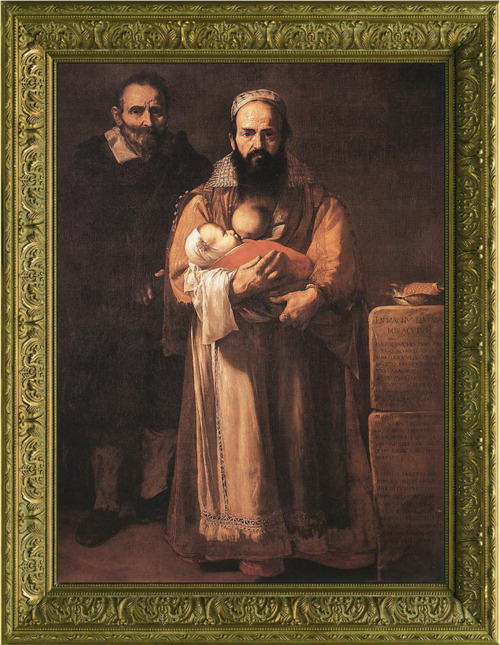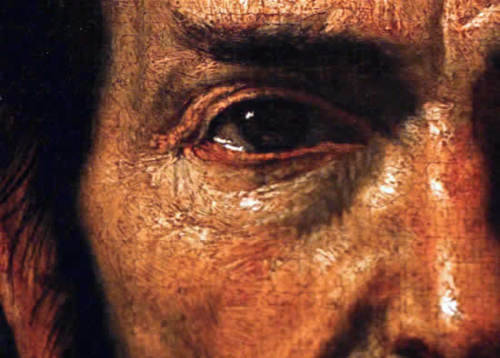The Bearded Woman by Jusepe de Ribera is truly one of the strangest paintings you’re bound to see and therefore it is a perfect WTF art historical object! The woman you see below is indeed a portrait of an known individual — named Magdalena Ventura — who at the age of 37 began to grow a beard (she was 52 when the portrait was painted and appears holding an infant as if she had just given birth, which is not likely). Anyone who views the portrait will notice a prominent inscription in the lower right hand corner that proclaims Magdalena a “great miracle of nature,” which in the context of 17th century courtly collecting circles was a euphemism for “she’s a freak!" So gawk and stare, and even laugh a little, but let’s try to look beyond the oddity to discover the qualities that make Ribera a genius in paint.
 Jusepe de Ribera, La Mujer Barbuda (The Bearded Woman), 1631, oil on canvas. Hospital de Tavera, Toledo, Spain
Jusepe de Ribera, La Mujer Barbuda (The Bearded Woman), 1631, oil on canvas. Hospital de Tavera, Toledo, Spain
Since Ribera included an inscription in the painting, it’s obvious that he intended viewers to read it. So here it is in translation:
Look, a great miracle of nature. Magdalena Ventura from the town of Accumulus in Samnium, in the vulgar tongue Abruzzo in the Kingdom of Naples, aged 52 and what is unusual is when she was in her 37th year she began to go through puberty and thus a full growth of beard appeared such that it seems rather that of a bearded gentleman than a woman who had previously lost three sons whom she had borne to her husband, Felici de Amici, whom you see next to her. Joseph de Ribera, a Spaniard, marked by the cross of Christ, a second Apelles of his own time, by order of Duke Ferdinand II of Alcalá, Viceroy at Naples, depicted in a marvellously lifelike way. 17th February 1631.
We’ve just learned so much about Magdalena! She’s pictured with her husband (Felici de Amici), three of her sons have already died, and we got the bit about the beard. We also know that Duke Ferdinand II of Alcalá, Viceroy at Naples, commissioned the portrait. Furthermore, we discern that Ribera is quite full of himself, writing as he did that he is "a second Apelles of his own time." Wow, that’s a tall order! Apelles was a famed painter in Ancient Greece, renowned for having produced a portrait of Alexander the Great! Let’s take a closer look at Magdalena.

Is it just me or is her breast too centered on her chest?!? As if that is the strangest part of this painting! For a full discussion of the gender-bending medical diagnosis, you must read the article by W Michael G Turnbridge here. It’s probably obvious to most viewers that Magdalena suffered from an overload of testosterone, but less obvious is that she may have experienced an androblastoma, which Turnbridge explains is "a benign androgen producing tumour of the ovary” (again, read his article for the full medical analysis). Thanks to such an analysis, one understands that Magdalena was born prone to said condition. Thus, unlike the proclivity of viewers in the 17th century to mock such a person, we today hopefully demonstrate greater respect toward all people. At least that is my hope.
To emphasize her femininity, Ribera included two symbols of womanhood atop the stone tablet with the inscription: a spindle and a shell. And we must not forget her husband, who stands lovingly, if with a look of exhaustion, in the background.
Finally, one of the most touching and human aspects of the portrait is the way in which Ribera painted Magdalena’s eye. Enjoy!












